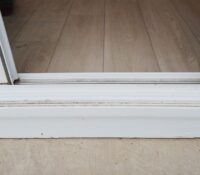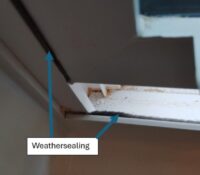Water Removal In Windows and Doors – Part 3: Sill Risers
Welcome back to my multi-part series about water resistance in windows and doors. Last time we discussed weatherstripping. Today, we move on to a product common to sliding doors and coastal areas – sill risers.
Sill risers offer a brute force way to reduce water infiltration when a LOT of water is expected to hit a fenestration product. Unlike weathersealing, buried drainage, or weep systems, sill risers block water by providing a dam. Coastal homes with wind driven rain frequently have sill risers. They are practical and require less maintenance than weep holes or buried drainage systems, plus Read More







